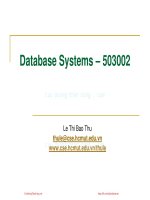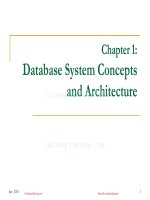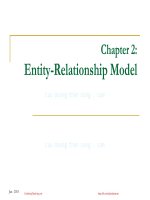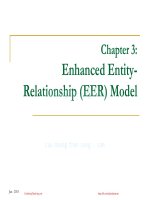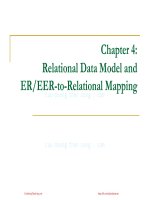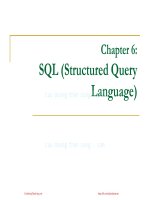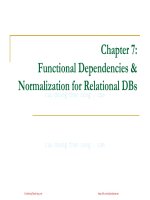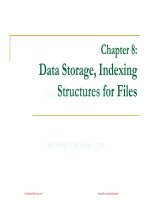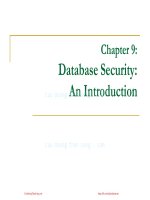cơ sở dữ liệu lê thị bảo thu chương ter 01 database system concepts and architecture sinhvienzone com
Bạn đang xem bản rút gọn của tài liệu. Xem và tải ngay bản đầy đủ của tài liệu tại đây (1.02 MB, 42 trang )
��������������������������������������������������������������������������������������������������������������������������������������������������������������������������������������������������������������������������������������������������������������������������������������������������������������������������������������������������������������������������������������������������������������������������������������������������������������������������������������������������������������������������������������������������������������������������������������������������������������������������������������������������������������������������������������������������������������������������������������������������������������������������������������������������������������������������������������������������������������������������������������������������������������������������������������������������������������������������������������������������������������������������������������������������������������������������������������������������������������������������������������������������������������������������������������������������������������������������������������������������������������������������������������������������������������������������������������������������������������������������������������������������������������������������������������������������������������������������������������������������������������������������������������������������������������������������������������������������������������������������������������������������������������������������������������������������������������������������������������������������������������������������������������������������������������������������������������������������������������������������������������������������������������������������������������������������������������������������������������������������������������������������������������������������������������������������������������������������������������������������������������������������������������������������������������������������������������������������������������������������������������������������������������������������������������������������������������������������������������������������������������������������������������������������������������������������������������������������������������������������������������������������������������������������������������������������������������������������������������������������������������������������������������������������������������������������������������������������������������������������������������������������������������������������������������������������������������������������������������������������������������������������������������������������������������������������������������������������������������������������������������������������������������������������������������������������������������������������������������������������������������������������������������������������������������������������������������������������������������������������������������������������������������������������������������������������������������������������������������������������������������������������������������������������������������������������������������������������������������������������������������������������������������������������������������������������������������������������������������������������������������������������������������������������������������������������������������������������������������������������������������������������������������������������������������������������������������������������������������������������������������������������������������������������������������������������������������������������������������������������������������������������������������������������������������������������������������������������������������������������������������������������������������������������������������������������������������������������������������������������������������������������������������������������������������������������������������������������������������������������������������������������������������������������������������������������������������������������������������������������������������������������������������������������������������������������������������������������������������������������������������������������������������������������������������������������������������������������������������������������������������������������������������������������������������������������������������������������������������������������������������������������������������������������������������������������������������������������������������������������������������������������������������������������������������������������������������������������������������������������������������������������������������������������������������������������������������������������������������������������������������������������������������������������������������������������������������������������������������������������������������������������������������������������������������������������������������������������������������������������������������������������������������������������������������������������������������������������������������������������������������������������������������������������������������������������������������������������������������������������������������������������������������������������������������������������������������������������������������������������������������������������������������������������������������������������������������������������������������������������������������������������������������������������������������������������������������������������������������������������������������������������������������������������������������������������������������������������������������������������������������������������������������������������������������������������������������������������������������������������������������������������������������������������������������������������������������������������������������������������������������������������������������������������������������������������������������������������������������������������������������������������������������������������������������������������������������������������������������������������������������������������������������������������������������������������������������������������������������������������������������������������������������������������������������������������������������������������������������������������������������������������������������������������������������������������������������������������������������������������������������������������������������������������������������������������������������������������������������������������������������������������������������������������������������������������������������������������������������������������������������������������������������������������������������������������������������������������������������������������������������������������������������������������������������������������������������������������������������������������������������������������������������������������������������������������������������������������������������������������������������������������������������������������������������������������������������������������������������������������������������������������������������������������������������������������������������������������������������������������������������������������������������������������������������������������������������������������������������������������������������������������������������������������������������������������������������������������������������������������������������������������������������������������������������������������������������������������������������������������������������������������������������������������������������������������������������������������������������������������������������������������������.com
/>
25
Three-Schema Architecture and
Data Independence
Internal Level
Jan - 2015
Physical representation of the database on the
computer.
Describes how the data is stored in the database
CuuDuongThanCong.com
/>
26
Three-Schema Architecture and
Data Independence
Jan - 2015
CuuDuongThanCong.com
/>
27
Three-Schema Architecture and
Data Independence
Data Independence is the capacity to change
the schema at one level of a database system
without having to change the schema at the next
higher level
Logical Data Independence
Jan - 2015
mien
Refers to immunity of external schemas to changes in
conceptual schema
Conceptual schema changes (e.g. addition/removal of
entities) should not require changes to external
schema or rewrites of application programs
CuuDuongThanCong.com
/>
28
Three-Schema Architecture and
Data Independence
Physical Data Independence
Jan - 2015
Refers to immunity of conceptual schema to
changes in the internal schema
Internal schema changes (e.g. using different file
organizations, storage structures/devices) should
not require changes to conceptual or external
schemas
CuuDuongThanCong.com
/>
29
Three-Schema Architecture and
Data Independence
Jan - 2015
CuuDuongThanCong.com
/>
30
Outline
File-based Approach and Database Approach
Three-Schema Architecture and Data
Independence
Database Languages
Data Models, Database Schema, Database
State
Data Management Systems Framework
Jan - 2015
CuuDuongThanCong.com
/>
31
Database Languages
Data Definition Language (DDL) allows the DBA or
user to describe and name entities, attributes, and
relationships required for the application plus any
associated integrity and security constraints
Data Manipulation Language (DML) provides basic
data manipulation operations on data held in the
database
Data Control Language (DCL) defines activities that
are not in the categories of those for the DDL and DML,
such as granting privileges to users, and defining when
proposed changes to a databases should be irrevocably
made
khong the huy bo
Jan - 2015
CuuDuongThanCong.com
/>
32
Database Languages
Procedural DML allows user to tell system
exactly how to manipulate data (e.g., Network
and hierarchical DMLs)
Non-Procedural DML (declarative language)
allows user to state what data is needed
rather than how it is to be retrieved (e.g.,
SQL, QBE)
Fourth Generation Languages (4GLs)
Jan - 2015
Non-procedural languages: SQL, QBE, etc.
Application generators, report generators, etc.
(see [2])
CuuDuongThanCong.com
/>
33
Outline
File-based Approach and Database Approach
Three-Schema Architecture and Data
Independence
Database Languages
Data Models, Database Schema, Database
State
Data Management Systems Framework
Jan - 2015
CuuDuongThanCong.com
/>
34
Data Models, Database Schema,
Database State
Data Model: An integrated collection of concepts
for describing data, relationships between data,
and constraints on the data in an organization
Categories of data models include:
Object-based (Conceptual)
Record-based (Representational)
Jan - 2015
ERD, Object-Oriented, …
Describe data at
the conceptual &
external levels
Relational, Network, Hierarchical
Physical: used to describe data at the internal level
CuuDuongThanCong.com
/>
35
Data Models, Database Schema and
Database State
Database Schema: the description of a
database, which is specified during database
design and is not expected to change
frequently
Schema Diagram: a displayed schema
Database State (Snapshot): the data in the
database at a particular moment in time
Jan - 2015
CuuDuongThanCong.com
/>
36
Data Models, Database Schema
and Database State
Jan - 2015
CuuDuongThanCong.com
/>
37
Outline
File-based Approach and Database Approach
Three-Schema Architecture and Data
Independence
Database Languages
Data Models, Database Schema, Database
State
Data Management Systems Framework
Jan - 2015
CuuDuongThanCong.com
/>
38
Data Management Systems Framework
Where are we?
Application
Layer
Data
Management
Layer
Visualization, Collaborative Computing, Mobile Computing,
Knowledge-based Systems
Layer 3: information extraction & sharing
Data Warehousing, Data Mining, Internet DBs, Collaborative, P2P &
Grid Data Management
Layer 2: interoperability & migration
Heterogeneous DB Systems, Client/Server DBs, Multimedia DB
Systems, Migrating Legacy DBs
Layer 1: DB technologies
DB Systems, Distributed DB Systems
Supporting
Layer
Jan - 2015
Networking, Mass Storage, Agents, Grid Computing Infrastructure,
Parallel & Distributed Processing, Distributed Object Management
CuuDuongThanCong.com
/>
39
Data Management Systems Framework
Extending database capabilities for new applications
Jan - 2015
Example applications: storage and retrieval of images,
videos, data mining (large amounts of data need to be
stored and analyzed), spatial databases, time series
applications, …
More complex data structures than relational
representation
New data types except for the basic numeric and character
string types
New operations and query languages for new data types
New storage and retrieval methods
New security mechanisms
…
CuuDuongThanCong.com
/>
40
Summary
File-based Approach and Database
Approach
Three-Schema Architecture and Data
Independence
Database Languages
Data Models Database Schema and
Database State
Data Management Systems Framework
Next week: ER Model
Jan - 2015
CuuDuongThanCong.com
/>
41
Jan - 2015
CuuDuongThanCong.com
/>
42
